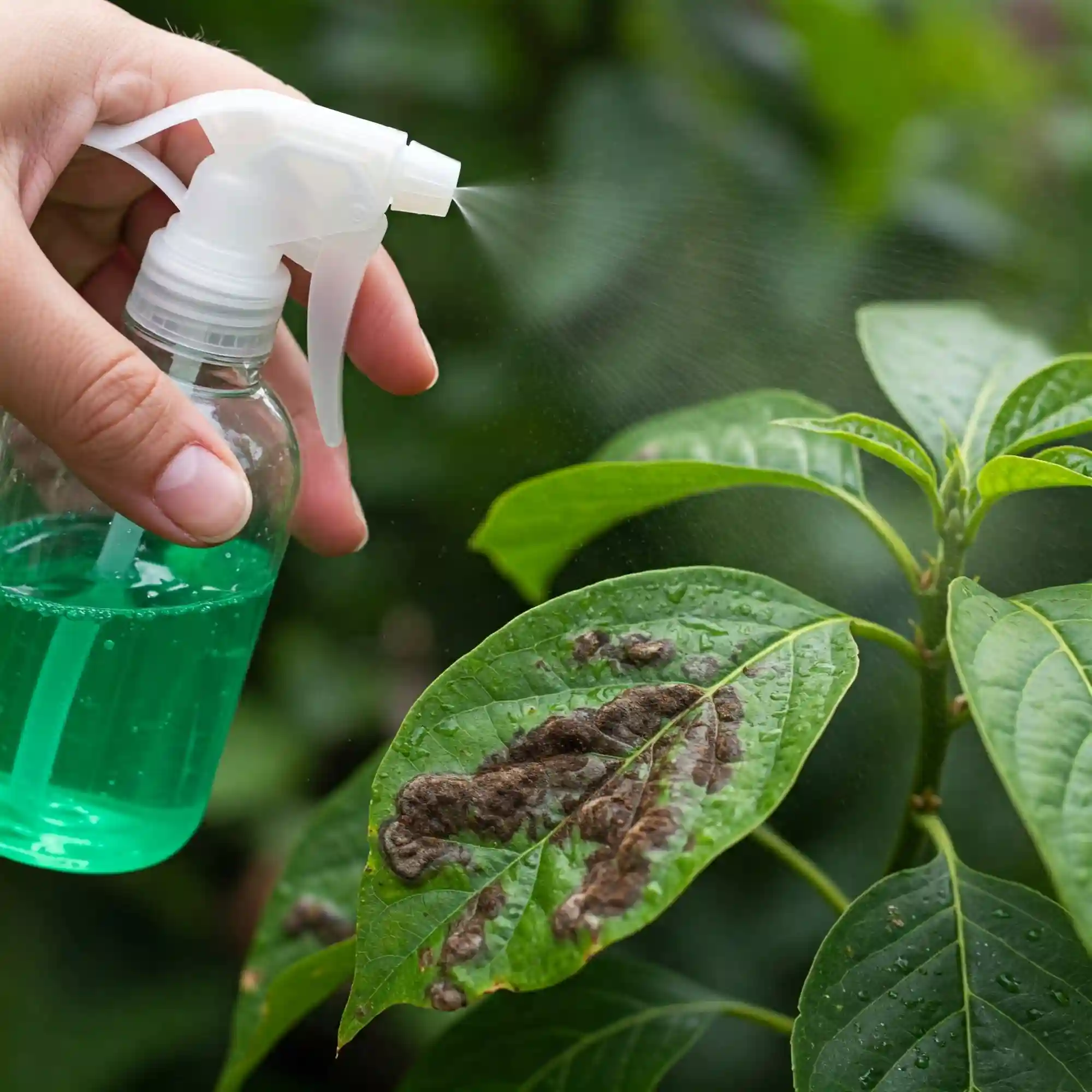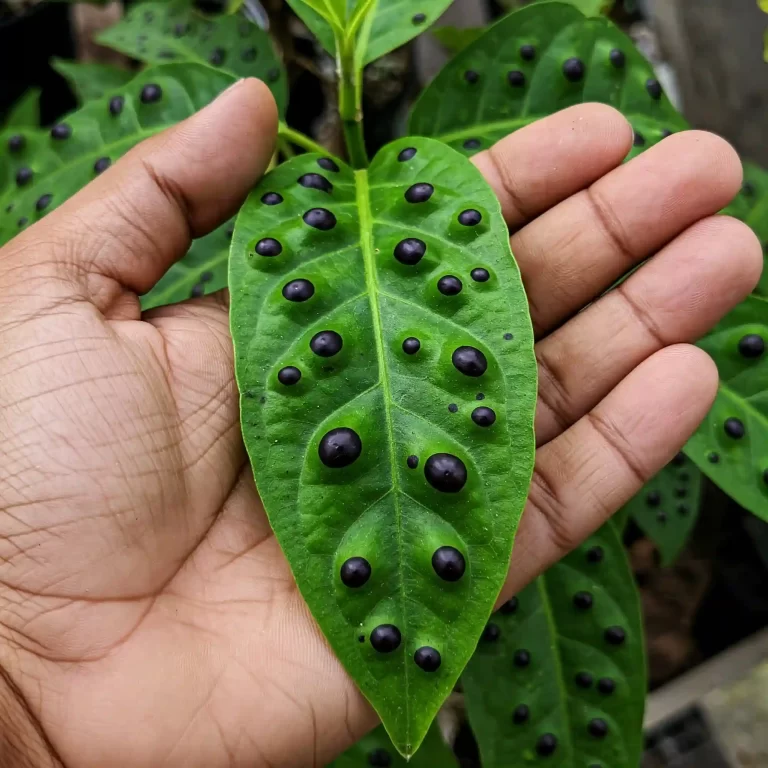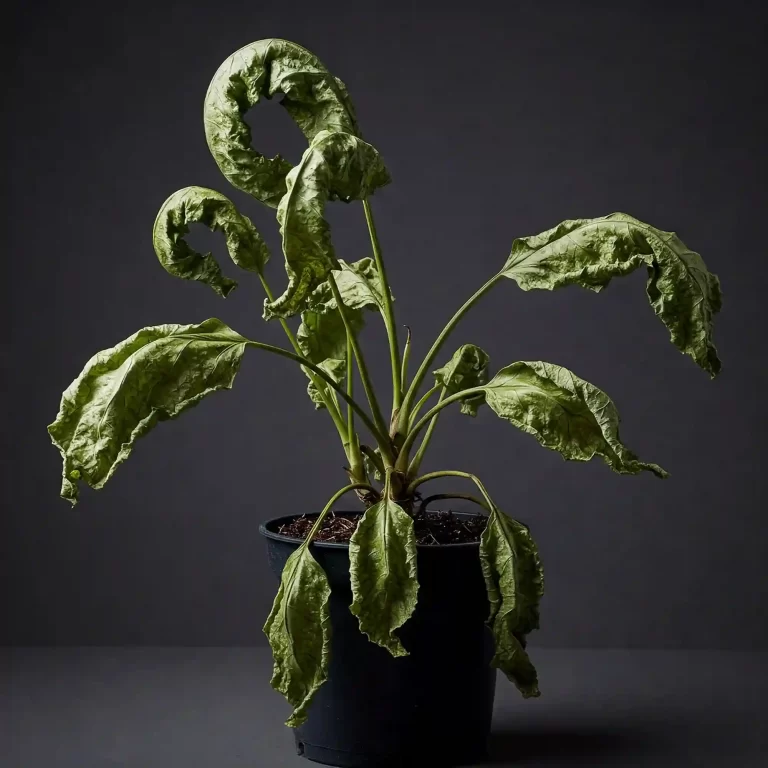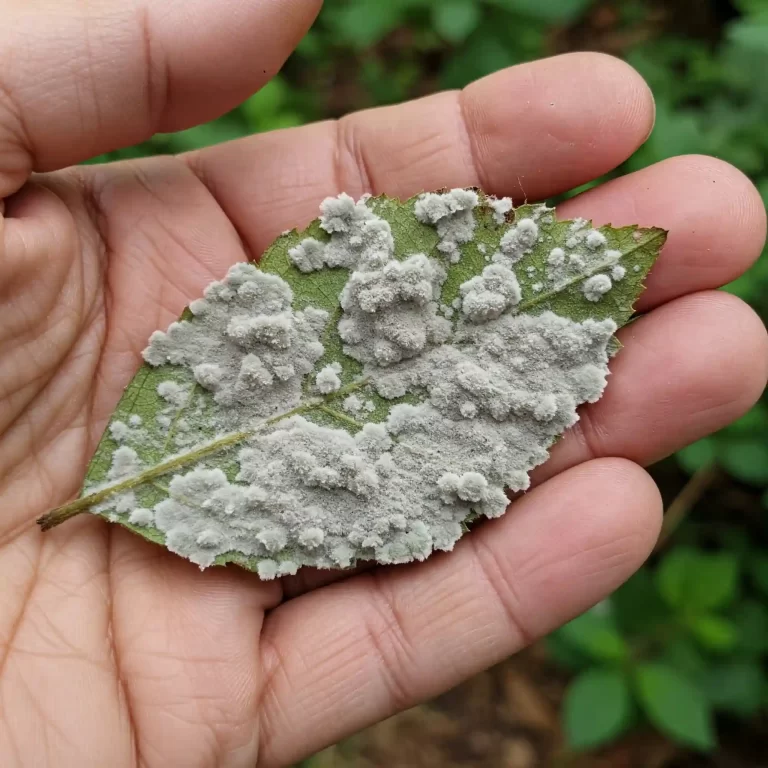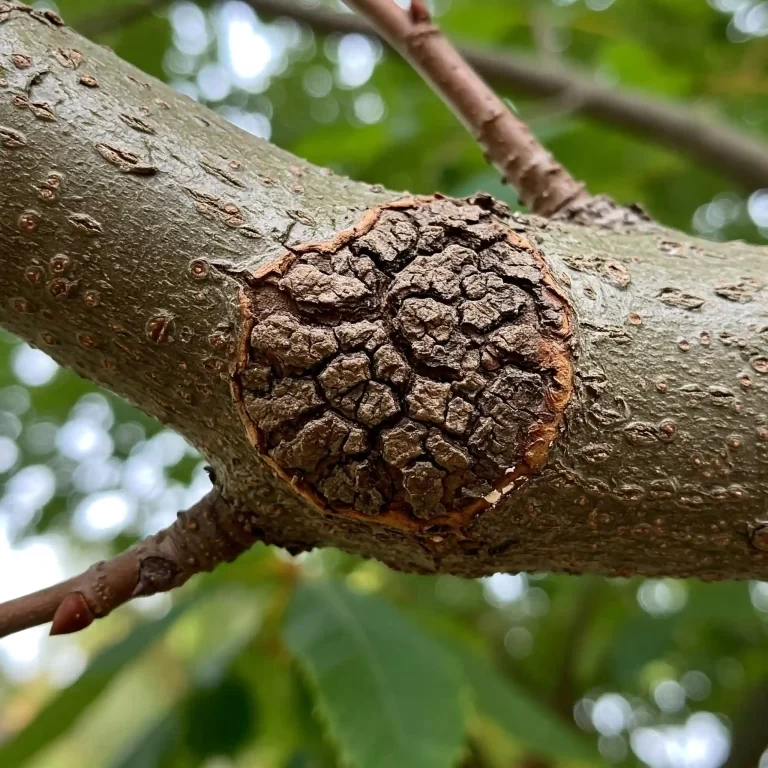Have you ever noticed a fuzzy, brown coating creeping across your prized plants? It’s a disheartening sight, isn’t it? You’ve poured your heart and soul into your garden, only to see it threatened by an unwelcome guest. I know the feeling. I’ve been there myself, battling the dreaded brown felt fungus. It can be frustrating, even a little scary, wondering if your plants will survive. But don’t worry, you’re not alone, and there’s hope! I’ve learned a lot over the years about dealing with this common garden issue, and I’m here to share my knowledge with you. This guide will equip you with the tools and strategies you need to identify, treat, and prevent brown felt fungus, so you can reclaim your garden and get back to enjoying its beauty.
1. Identifying Brown Felt Fungus: What Does It Look Like?
Let’s start by getting clear on what brown felt fungus actually looks like. It’s not always easy to pinpoint, as it can mimic other plant problems. I remember one time, I mistook early signs of brown felt fungus for dirt splatters! It wasn’t until I looked closer that I realized the difference.
Brown felt fungus isn’t a specific type of fungus, but rather a symptom – a visual clue that something’s amiss. Think of it like a fever in humans; it indicates an underlying issue. Several different fungi can cause this brown, felt-like growth. Here’s what to watch out for:
- Texture: The key identifier is the fuzzy or felt-like texture. It’s not just a discoloration of the leaf surface; it’s a distinct growth on the leaf. It feels almost velvety to the touch.
- Color: The color ranges from a light tan or brown to a darker, more chocolatey brown. It’s rarely black or other colors.
- Location: I’ve most often seen it on leaves, but it can also appear on stems, branches, and even fruit, depending on the specific fungus involved.
- Pattern: It often starts as small, isolated patches and can spread to cover larger areas of the plant. Sometimes it appears as spots, other times as a more diffuse coating.
- Context: Brown felt fungus is often associated with specific environmental conditions, like high humidity and poor air circulation. If your garden tends to be damp or your plants are crowded, you’re more likely to see it.
Distinguishing Brown Felt Fungus from Other Issues:
It’s crucial to correctly identify brown felt fungus. Here’s a quick comparison to help you differentiate it from other common plant problems:
- Dirt or Mud: Dirt can easily be wiped away, whereas brown felt fungus is attached to the plant tissue.
- Leaf Spot Diseases: Some leaf spot diseases can also cause brown spots, but these are usually more defined and may have a different texture (e.g., papery or target-like).
- Rust Fungi: Rust fungi produce powdery, orange or reddish-brown spores, not a felt-like growth.
- Algae: Algae, especially on indoor plants, can sometimes look similar, but it’s often greenish or slimy, not fuzzy.
My Personal Tip: I always keep a magnifying glass handy when I’m inspecting my plants. It helps me get a closer look at any suspicious spots and determine if it’s truly brown felt fungus or something else.
2. Unmasking the Culprits: What Causes Brown Felt Fungus?
Now that you know what to look for, let’s explore the underlying causes of brown felt fungus. Understanding these factors is key to preventing and controlling it effectively. I’ve learned that simply treating the symptoms without addressing the root cause is like putting a band-aid on a broken bone – it might offer temporary relief, but the problem will likely return.
Brown felt fungus thrives in specific conditions. Think of it like this: just as we need certain conditions to be comfortable, fungi also have their preferences. Here are the main culprits:
- High Humidity: This is perhaps the biggest factor. Fungi love moisture, and high humidity provides the perfect environment for their spores to germinate and grow. Think damp, still air – that’s a fungal paradise. In my experience, greenhouses and other enclosed spaces can become humidity traps, especially during periods of high rainfall or in warm, humid climates. Even outdoor gardens can experience high humidity levels during prolonged periods of rain or fog.
- Poor Air Circulation: Stagnant air traps moisture and creates a humid microclimate around your plants, making them more susceptible to fungal diseases. Good airflow helps to dry out leaves and stems, making it less hospitable for fungi. I’ve found that strategically placing plants to allow for maximum air circulation can significantly reduce the risk of brown felt fungus. Avoid overcrowding your garden beds and consider using fans to increase airflow in enclosed spaces.
- Overwatering: Consistently wet soil not only deprives plant roots of oxygen but also creates a breeding ground for fungi. Overwatering is a common mistake I see, especially with new gardeners. It’s tempting to want to give your plants plenty of water, but less is often more. I’ve learned to water deeply and infrequently, allowing the soil to dry out slightly between waterings. This encourages deeper root growth and reduces the risk of fungal infections.
- Weakened Plants: Just like us, plants are more vulnerable to disease when their immune systems are compromised. Stressed plants – whether from lack of nutrients, drought, pests, or other diseases – are more likely to succumb to fungal infections. Ensuring your plants receive adequate nutrition, proper sunlight, and appropriate watering is crucial for maintaining their health and resilience.
- Crowded Plants: When plants are packed too closely together, air circulation is reduced, and humidity levels tend to be higher. This creates a favorable environment for fungal growth and also makes it easier for diseases to spread from one plant to another. Providing adequate space between plants allows for better air circulation and reduces the risk of disease transmission.
Factors Contributing to Brown Felt Fungus
| Factor | Explanation |
| High Humidity | Damp conditions create an ideal environment for fungal growth. |
| Poor Air Circulation | Stagnant air traps moisture, promoting fungal development. |
| Overwatering | Excess moisture in the soil suffocates roots and encourages fungal growth. |
| Weakened Plants | Stressed plants are more susceptible to diseases, including fungal infections. |
| Crowded Plants | Lack of space reduces air circulation and increases humidity, favoring fungal growth. |
By understanding these contributing factors, you can take steps to minimize the risk of brown felt fungus in your garden. Remember, prevention is always key!
3. Brown Felt Fungus on A Closer Look
While brown felt fungus can affect a wide range of plants, some species seem to be more susceptible than others. It’s like certain individuals are more prone to catching a cold – some plants are simply more susceptible to certain diseases. Understanding which plants are most at risk can help you be more vigilant and proactive in your plant care.
Roses: Ah, the beloved rose! Unfortunately, roses are particularly susceptible to a variety of fungal diseases, and brown felt fungus is a common culprit. I’ve seen it firsthand in my own rose garden – those beautiful blooms can be quickly marred by unsightly patches of this fuzzy growth. Black spot and powdery mildew are two common rose diseases that can present with a brown, felt-like appearance.
Fruit Trees: Apple trees, pear trees, and other fruit-bearing trees can also be affected. Brown felt fungus can sometimes appear on the fruit itself, making it unsightly and potentially reducing the yield. In some cases, it can even weaken the tree’s overall health.
Vegetables: Many vegetable crops are vulnerable, especially if they are grown in crowded conditions or in environments with high humidity. I’ve seen it on tomatoes, cucumbers, and even some leafy greens. It can stunt growth, reduce yield, and make the vegetables unattractive for consumption.
Indoor Plants: Don’t forget about your houseplants! Overwatering and poor air circulation are common culprits in indoor environments. I’ve seen brown felt fungus on a variety of indoor plants, including ferns, ficus trees, and peace lilies.
Knowing which plants are most at risk allows you to take preventative measures. For example, if you have a rose garden, you can choose varieties that are known to be more resistant to fungal diseases. You can also adjust your watering practices and improve air circulation to create a less hospitable environment for fungi.
It’s important to note that not all brown felt-like growths are the same. The specific type of fungus involved can vary depending on the plant species and the environmental conditions. For example, a brown felt-like growth on a rose might be caused by a different fungus than one on a tomato plant. This is why accurate identification is crucial for effective treatment. If you’re unsure about what you’re dealing with, it’s always a good idea to consult a local gardening expert or your county extension office. They can help you diagnose the problem and recommend the best course of action.
4. Control Strategies: How to Stop Brown Felt Fungus
Now that we understand what brown felt fungus is and what causes it, let’s talk about how to combat it. Early detection and a proactive approach are key to successful control. Over the years, I’ve developed a multi-pronged strategy that has proven effective in my own garden.
- Improve Air Circulation: This is arguably the single most important step you can take. Remember, stagnant air is a breeding ground for fungi. Here are some tips to increase airflow:
- Pruning: Regular pruning is essential. Remove any dead, dying, or overcrowded branches. This not only improves air circulation but also helps to prevent the spread of disease. When pruning, make sure to use clean, sharp tools to minimize the risk of introducing other pathogens.
- Spacing: Ensure that your plants have enough space to grow without crowding each other. This allows for better air circulation and reduces humidity levels around the plants.
- Strategic Planting: Consider the mature size of your plants when planning your garden layout. Avoid planting tall plants too close together, as they can shade out and crowd smaller ones.
- Adjust Watering Habits: As I mentioned earlier, overwatering is a common culprit. Water deeply and infrequently, allowing the soil to dry out slightly between waterings. This encourages deeper root growth and reduces the risk of creating a constantly damp environment that favors fungal growth. Avoid overhead watering, as this can splash water onto the leaves and create a humid microclimate.
- Remove Infected Material: Promptly remove any infected leaves, stems, or fruits. This helps to prevent the spread of the disease to other parts of the plant and to other plants in your garden. Dispose of infected plant material properly, either by burning it or bagging it and discarding it in the trash. Do not compost infected plant material, as this can spread the fungus.
- Apply Fungicides (if necessary): If the infestation is severe, you may need to resort to fungicides. Always choose organic options whenever possible, such as neem oil or copper fungicides. Follow the product instructions carefully and apply them according to the label directions. Be aware that some fungicides can harm beneficial insects, so choose wisely and apply them judiciously.
- Boost Plant Health: Strong, healthy plants are better equipped to resist disease. Ensure your plants receive adequate sunlight, water, and nutrients. Fertilize regularly with a balanced fertilizer to provide the necessary nutrients for growth and development. Avoid over-fertilizing, as this can weaken plants and make them more susceptible to disease.
Remember, early intervention is key. The sooner you address the issue, the easier it will be to control the spread of brown felt fungus. Regularly inspect your plants for any signs of disease, and take action promptly if you notice any suspicious growths.
5. Prevention: Keeping Brown Felt Fungus at Bay
As the old adage goes, “prevention is better than cure.” This couldn’t be more true when it comes to dealing with brown felt fungus. By taking proactive steps to minimize the risk of infection, you can save yourself a lot of time and effort down the road. Here are some preventive measures I’ve found to be highly effective:
- Choose Disease-Resistant Varieties: If possible, opt for plant varieties that are known to be more resistant to fungal diseases. Many nurseries and garden centers can provide information on disease-resistant cultivars. This is a proactive step that can significantly reduce your risk of encountering brown felt fungus in the first place.
- Maintain Good Garden Hygiene: Good garden hygiene is crucial in preventing the spread of diseases. Regularly remove fallen leaves, weeds, and other debris from around your plants. These can harbor fungal spores and provide a source of infection. I also recommend cleaning up any fallen fruit or vegetables promptly, as they can also attract pests and diseases.
- Water Correctly: As I mentioned earlier, proper watering is essential. Avoid overhead watering, as this can splash water onto the leaves and create a humid microclimate that favors fungal growth. Instead, water deeply and infrequently, allowing the soil to dry out slightly between waterings. Focus on watering the base of the plant rather than the foliage. You can also consider using a soaker hose or drip irrigation system, which delivers water directly to the roots and minimizes leaf wetness.
- Provide Adequate Spacing: Give your plants enough space to grow and breathe. Crowded plants create a humid environment and make it difficult for air to circulate freely. This can increase the risk of fungal infections. When planting, consider the mature size of your plants and space them accordingly.
- Monitor Plants Regularly: Regular observation is key to early detection. I make it a habit to spend some time in my garden every day, simply observing my plants. This allows me to spot any early signs of disease, such as unusual discoloration, wilting, or the appearance of new growths. Early detection allows for prompt treatment, minimizing the severity of the infection.
By implementing these preventive measures, you can create a less hospitable environment for brown felt fungus and significantly reduce your risk of encountering this frustrating garden problem. Remember, a healthy garden starts with proactive care and attention to detail.
6. Natural and Organic Remedies: A Gentle Approach
While chemical fungicides can be effective, I prefer to explore natural and organic options whenever possible. They are generally safer for the environment and less harmful to beneficial insects. Over the years, I’ve experimented with several natural remedies, and some have shown promising results in controlling brown felt fungus.
- Neem Oil: Neem oil is a natural plant extract derived from the neem tree. It has antifungal, antibacterial, and insecticidal properties. I’ve found it to be quite effective in controlling a variety of fungal diseases, including those that cause brown felt fungus. You can purchase neem oil at most garden centers and online retailers. Be sure to dilute it according to the package instructions and apply it thoroughly to the affected areas of the plant.
- Baking Soda Solution: A simple solution of baking soda and water can be effective in controlling some types of fungal diseases. Mix 1 tablespoon of baking soda in 1 gallon of water and spray the affected plants thoroughly. Repeat the application every 7-10 days until the problem is resolved. Note that baking soda solutions can be harsh on some plants, so it’s always a good idea to test it on a small area first to ensure it doesn’t cause any damage.
- Copper Fungicides: Copper fungicides are another organic option for controlling fungal diseases. Copper is a naturally occurring element that has antifungal properties. Copper fungicides are available in a variety of forms, including sprays, dusts, and granules. Always follow the product instructions carefully and apply them according to the label directions.
- Potassium Bicarbonate: Potassium bicarbonate is another natural fungicide that can be effective against a variety of fungal diseases. It works by disrupting the fungal cell wall. Potassium bicarbonate is available in both liquid and powder form. Follow the product instructions carefully when applying it to your plants.
- Improving Plant Health: Remember, healthy plants are better able to resist diseases. Ensure your plants receive adequate sunlight, water, and nutrients. Avoid over-fertilizing, as this can weaken plants and make them more susceptible to disease. Mulching around your plants can help to conserve moisture, regulate soil temperature, and suppress weeds.
It’s important to note that natural remedies may not always be as effective as chemical fungicides. If the problem is severe or the natural remedies are not providing adequate control, you may need to resort to using a chemical fungicide. Always choose the least toxic option and follow the product instructions carefully.
7. Brown Felt Fungus FAQs: Your Questions Answered
I understand that you might have some lingering questions about brown felt fungus. It can be a confusing issue, and I’ve certainly had my share of questions over the years. Here are answers to some of the most common questions I’ve encountered:
Q: How do I know if it’s brown felt fungus or something else?
- A: As we discussed earlier, the key is to look for the characteristic fuzzy, felt-like texture. If you’re unsure, take a close look with a magnifying glass, as I mentioned earlier. Compare what you see to images of brown felt fungus online. If you’re still uncertain, you can consult a local gardening expert or your county extension office for assistance.
Q: Is brown felt fungus harmful to humans?
- A: Generally, brown felt fungus is not directly harmful to humans. However, it’s always a good practice to avoid direct contact with any diseased plant material. Wash your hands thoroughly with soap and water after handling infected plants.
Q: Can I use household products to treat brown felt fungus?
- A: Some people have reported success with using household products like baking soda or milk to treat fungal diseases. However, I recommend proceeding with caution and researching thoroughly before applying any untested remedies to your plants. Using unproven methods can sometimes do more harm than good.
Q: How often should I treat my plants for brown felt fungus?
- A: The frequency of treatment depends on the severity of the infection and the type of treatment you’re using. For fungicides, follow the instructions on the product label carefully. For natural remedies, you may need to repeat applications every few days or weeks. Monitor your plants closely and adjust your treatment plan as needed.
Q: Will brown felt fungus kill my plants?
- A: In most cases, brown felt fungus won’t kill your plants outright. However, it can weaken them significantly, making them more susceptible to other diseases and pests. If left untreated, it can reduce plant vigor, stunt growth, and even lead to defoliation. Early detection and prompt treatment are crucial to minimizing the impact on your plants.
Q: How can I prevent brown felt fungus in my greenhouse?
- A: Greenhouses can be particularly prone to humidity issues, which can favor the growth of brown felt fungus. Ensure adequate ventilation by opening vents or using fans. Monitor humidity levels and take steps to reduce them if necessary. Avoid overwatering and allow for proper air circulation around your plants.
Q: What’s the best time of year to treat brown felt fungus?
- A: The best time to treat brown felt fungus is as soon as you identify it. Don’t wait for the problem to worsen. Early intervention is key to minimizing the damage and preventing the spread of the disease.
By addressing these common questions, I hope to provide you with a better understanding of brown felt fungus and how to deal with it effectively. Remember, prevention is always the best course of action. By creating a healthy environment for your plants and practicing good garden hygiene, you can significantly reduce your risk of encountering this frustrating garden problem.
In conclusion, while brown felt fungus can be a challenge, it doesn’t have to spell doom for your garden. By understanding its causes, implementing effective control strategies, and taking proactive steps to prevent it, you can reclaim your garden and enjoy the beauty of healthy, thriving plants. Happy gardening!
Conclusion
I hope this comprehensive guide has equipped you with the knowledge and tools to effectively manage brown felt fungus in your garden. Remember, prevention is key. By creating a healthy environment for your plants, practicing good garden hygiene, and taking proactive steps to address any issues, you can minimize the risk of encountering this fungal challenge.
While brown felt fungus can be frustrating, it doesn’t have to spell doom for your garden. With a little knowledge, patience, and the right approach, you can overcome this obstacle and continue to enjoy the beauty and rewards of gardening.
Remember, every gardener faces challenges, and learning to overcome them is part of the journey. Don’t let brown felt fungus discourage you. Embrace the opportunity to learn more about your plants and refine your gardening practices.
I encourage you to share your experiences and insights with other gardeners. By connecting with fellow plant enthusiasts, we can learn from each other and continue to grow as gardeners.
Happy gardening!
